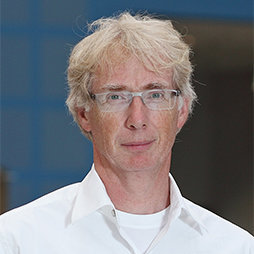From bottled water to doctor
One PhD’s journey to make consumers go green
Most people, according to PhD candidate Mirjam Visser, say they want to shop sustainably but few consumers actually purchase the most environmentally-friendly option when shopping. For her thesis research, she set out to understand why some consumers will buy green options while others won’t - and how to encourage people to make more sustainable choices.
Inspired by bottled water
“I just wanted to buy sparkling water,” Visser says, when asked how she became interested in sustainable behaviour. She was living in Shanghai and, since carbonated water is not popular in China, there were no locally produced carbonated water brands. Visser says her options at the supermarket were an Italian brand in glass bottles or a Belgian brand in plastic. “I couldn’t figure out which one was better for the environment,” she says.
That question led her to found Design-4-Sustainability, a platform where designers could share information about environmentally-conscious design. While trying to gather data for a lifecycle analysis tool for the platform, she discovered that the department of Sustainable Design Engineering at the TU Delft | Faculty of Industrial Design Engineering (IDE) had a database that would be useful. And so, in 2011, she started her PhD there. “I thought I would get a bit of an intellectual challenge,” Visser says.
Having completed her master’s degree at IDE in 1990 and having first worked for the Dutch aerospace company, Fokker, before moving over to the consulting firm PriceWaterhouseCooper as a business consultant – Visser was already well into her career as a business consultant by the time she began her PhD journey at IDE.
PhD research into sustainable consumption
Her thesis entitled, Increasing the sustainable consumption of mainstream consumers: through design and communication, was the product of more than a decade of research into consumer behaviour. To conduct her research, Visser used a combination of surveying consumers about their choices and statistical analysis of consumer data from Philips, an electronics company.
Data from Philips showed that when purchasing vacuum cleaners, customers rarely based their decision criteria on how green a product was. “Nearly all buying decisions are made from perception,” she says. Visser discovered that consumers often perceive sustainable products as less robust and less effective than their non-green counterparts.
Worse, consumers were less likely to recommend a green product to someone else, because they based their endorsement on other criteria - like how heavy or how quiet it was.
This finding was made clearer by another experiment that Visser ran about sustainable shoes. Shoppers would purchase the more sustainable shoe option if it was already what they were looking for. The sustainable shoe had to be just as comfortable and fashionable as the non-sustainable pair for it to be considered.
Visser also points out that products that are better for the environment are only green if they are used in sustainable ways. For example, washing machines sold in the European Union are now required to have an eco-setting, which uses less energy. But users have to opt-in as the default for most machines is the non-eco setting. In an experiment that she ran with labels for washing machines, Visser’s research found that customers don’t use the setting if they have to select it. “Only about 7% of laundry loads are washed on an eco-setting,” she says.
Some consumers will buy or use the more sustainable option every time, says Visser. But she wants designers to focus on the much larger group who don’t. “This would be far more effective,” she says.
Designing with perception in mind
Visser has some ideas for designers about where to start. If perception is so important, she says, then green products should be designed to offset their negative image. Products can be designed to seem heavier or appear sturdier without compromising on environmental factors.
Designers can also focus on factors that don’t contribute to the overall energy usage but are important features for consumers. For example, consumers perceive the weight of a vacuum as an indication of effectiveness. Heavier machines are seen as being tougher and the weight makes them easier to manoeuvre when using. Green vacuums have a less powerful motor and are thus lighter, but this could be compensated for in their design.
“The first Tesla was a damn sexy car,” she says, referring to the popular electric vehicle. She goes on to argue that people didn’t buy a Tesla because it was better for the environment, but because it was beautiful and cool. This is what Visser wants designers to take away from her research: make your green products cool and people will buy them. You want people to buy sustainable even if they are not interested in sustainability.
Although she initially didn’t think her PhD would make a big difference to her career, she has seen more and more clients approach her after hearing about her research. And while obtaining her PhD later in her career posed quite a few additional challenges, now Visser is looking forward to bringing her knowledge to practice.

Jan Schoormans
- +31 (0)15 27 84840
- J.P.L.Schoormans@tudelft.nl
- Publications
-
Room B-4-080
"Bij ons staat op de keukendeur: Het is niet altijd rozengeur."
Erik Jan Hultink
- +31 (0)15 27 83032
- H.J.Hultink@tudelft.nl
-
Room B-4-170
"You can not save a bad product with a splendid launch strategy but you can surely kill a great product with a poor launch strategy"

![[Translate to English:] Thesis cover Mirjam Visser](https://filelist.tudelft.nl/user_upload/MirjamVisser-thesiscover.png)
![[Translate to English:] Scope](https://filelist.tudelft.nl/user_upload/Picture_scope.jpg)
![[Translate to English:] Shoes](https://filelist.tudelft.nl/user_upload/Picture_2.1_shoes.png)
![[Translate to English:] Bottled water](https://filelist.tudelft.nl/user_upload/website%20-%20designstory%20-%20mirjam%20visser.png)